Transport in Hungary relies on several main modes, including transport by road, rail, air and water.

A trolleybus is an electric bus that draws power from dual overhead wires using spring-loaded trolley poles. Two wires, and two trolley poles, are required to complete the electrical circuit. This differs from a tram or streetcar, which normally uses the track as the return path, needing only one wire and one pole. They are also distinct from other kinds of electric buses, which usually rely on batteries. Power is most commonly supplied as 600-volt direct current, but there are exceptions.

Debrecen is Hungary's second-largest city, after Budapest, the regional centre of the Northern Great Plain region and the seat of Hajdú-Bihar County. A city with county rights, it was the largest Hungarian city in the 18th century and it is one of the Hungarian people's most important cultural centres. Debrecen was also the capital city of Hungary during the revolution in 1848–1849. During the revolution, the dethronement of the Habsburg dynasty was declared in the Reformed Great Church. The city also served as the capital of Hungary by the end of World War II in 1944–1945. It is home to the University of Debrecen.

Nyíregyháza is a city with county rights in northeastern Hungary and the county capital of Szabolcs-Szatmár-Bereg. With a population of 118,001, it is the seventh-largest city in Hungary and the second largest in the Northern Great Plain region. Its development has been ongoing since the 18th century, making it the economic and cultural center of the region. Nyíregyháza Zoo, with over 500 species, is recognized throughout Europe.

Budapesti Közlekedési Zrt. or BKV Zrt. is the main public transport operator in Budapest, Hungary. BKV was established in 1968 as a unified public transport company with the merger of the companies responsible for the different means of transport; bus operator FAÜ, tram and trolleybus operator FVV, suburban railway operator BHÉV and riverboat operator FHV. The metro was added in 1973. The transport in Budapest underwent another reorganization in 2010 when the BKK was founded for the management of the city transport and infrastructure.

Bucharest has the largest transport network in Romania, and one of the largest in Europe. The Bucharest transport network is made up of a subway network and a ground transport network. Although there are multiple connection points, the two systems operate independently of each other, and are run by different organisations (the subway is run by Metrorex and the ground transport network by Societatea de Transport București. The two companies used separate ticketing systems until 2021, when a new smartcard was introduced alongside the old tickets, which allows travel on both the STB and the Underground.
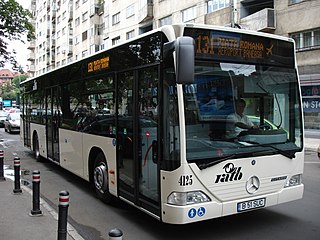
Societatea de Transport București is one of the main public transit operators in Bucharest, Romania, owned by the Municipality of Bucharest. From 1990 to 2018, the company had a different legal status and was known as the Regia Autonomă de Transport București (RATB).

Hungarian State Railways is the Hungarian national railway company and the MÁV Zrt. is the railway infrastructure manager, with subsidiaries "MÁV-START Zrt.", and "Utasellátó".
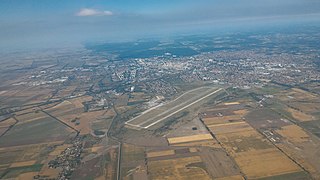
Debrecen International Airport is the international airport of Debrecen in the Hajdú-Bihar County of Hungary. It is the second largest airport in Hungary, after Budapest and ahead of Hévíz–Balaton. Debrecen is the second largest city in Hungary, after Budapest and ahead of Szeged. DEB is located 5 km (3.1 mi) south southwest of the city center and also easily accessible to adjacent regions of Romania and Ukraine.

Sporveien Oslo AS is a municipally owned public transport operator in Oslo, Norway. It operates the trackage and maintains the stock of the Oslo Metro and Oslo Tramway. In 2022, its 3,306 employees transported 217 million passengers. Since 2008 it has operated on contract with the public transport authority Ruter.

Public transport in Debrecen, Hungary, is provided by DKV

South Yorkshire Passenger Transport Executive (SYPTE) was the passenger transport executive for South Yorkshire. It was responsible for implementing policies set by the South Yorkshire Passenger Transport Authority (SYPTA) and for operation of the Authority's bus fleet from its formation in 1974 until its dissolution in 2023, when its assets and duties were transferred to the South Yorkshire Mayoral Combined Authority.
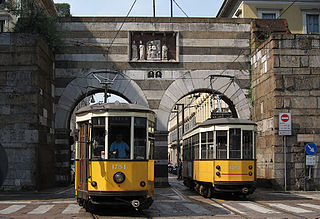
Europe has an extensive number of tramway networks. Some of these networks have been upgraded to light rail standards, called Stadtbahn in Germany, premetros in Belgium, sneltram in the Netherlands, metro ligeiro in Portugal and fast trams in some other countries.
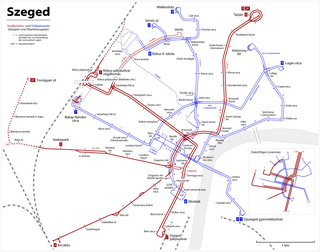
Public transport in Szeged, Hungary is provided by two companies, SzKT and Volánbusz. The former company operates trams and trolley buses, while the latter operates buses. SzKT is owned by the city.
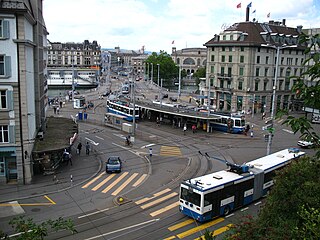
Verkehrsbetriebe Zürich (VBZ) is a public transport operator in the Swiss city of Zurich, and is wholly owned by the city. Previously known as the Städtische Strassenbahn Zürich (StStZ), the organisation was founded in 1896 and adopted its current name in 1950.
Public transport in Bratislava is managed by Dopravný podnik Bratislava, a city-owned company. The transport system is known as Mestská hromadná doprava, and the network is the largest in Slovakia. The history of public transportation in Bratislava began with the opening of the first tram route in 1895, when the city was in the Kingdom of Hungary, part of the Austro-Hungarian empire. Passengers must buy their tickets before entering the vehicle. Revenue from tickets covers approximately 40% of expenses, with the other 60% paid by the city.
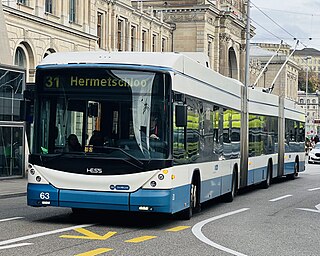
The Zurich trolleybus system is part of the public transport network of Zurich, Switzerland. Opened in 1939, it combines the Zurich S-Bahn, the Zurich tramway network and Zurich's urban motorbus network to form an integrated all-four style scheme.

Trams in Debrecen is an important part of the public transport network serving Debrecen, Hungary. In operation since 1911, the network presently has two lines.
The Szeged Transport Ltd. is the name of the transport company of the city of Szeged, Hungary.

The Lviv trolleybus is a trolleybus system in Lviv, Ukraine. The trolleybus network is operated by Lvivelectrotrans - a municipal enterprise, that is the operator of trams and trolleybuses in the city. LET is owned by the Lviv city council. The length of the contact network is 136 km (01.2023), and the length of the route network is 169 km (01.2021). As of 2021, 24,678,300 paid passengers used trams and trolleybuses. In 2021, trolleybuses performed 3.29 million kilometers of transportation work (vehicle-km). In January 2024, 900,744 passengers were transported by trolleybus routes.

























